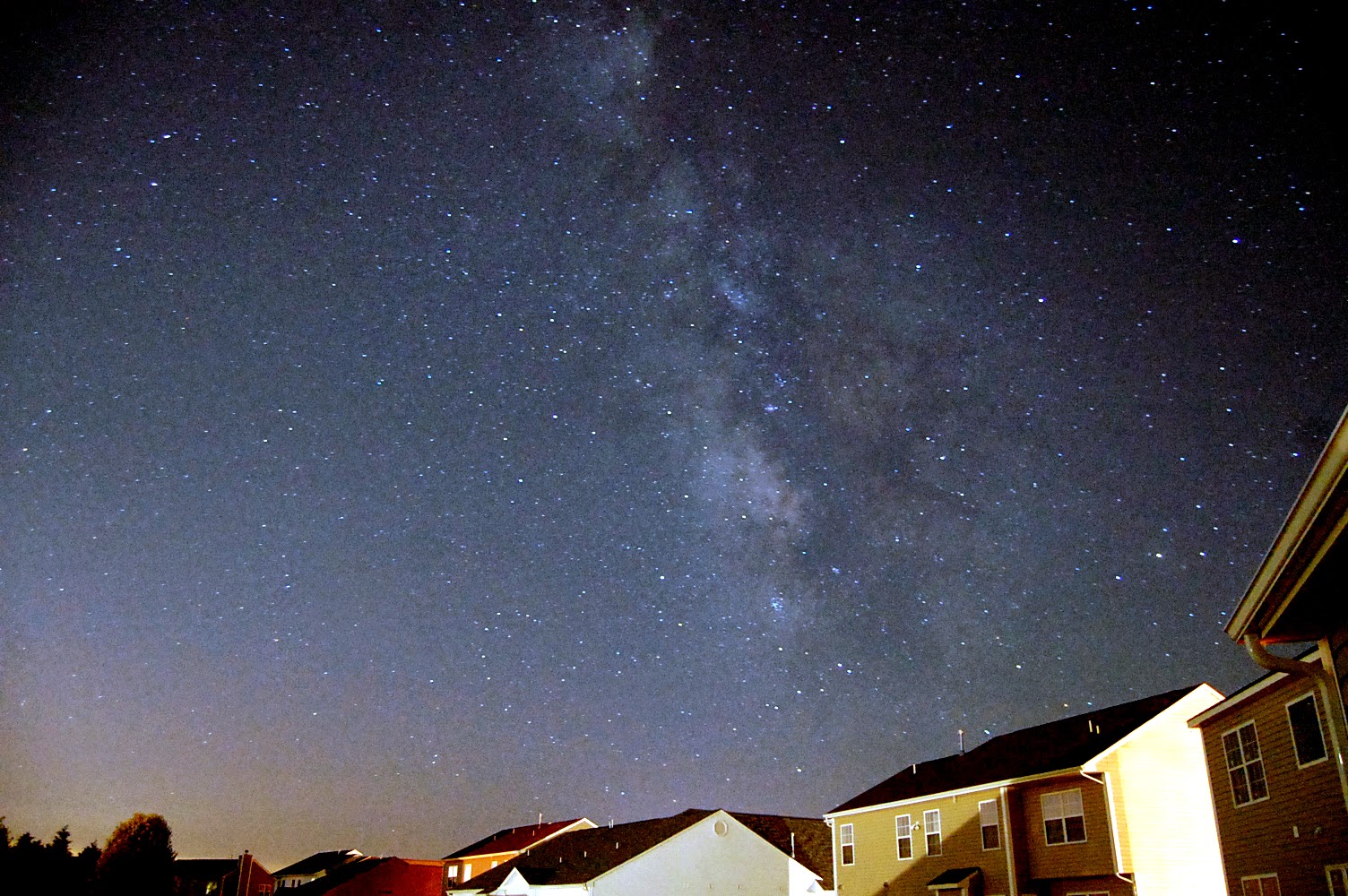Wasted Opportunity
Experts predicted a strong meteor shower, possibly a meteor storm, for the predawn hours of May 24th. A comet named 209P/LINEAR had left behind a trail of debris, and the debris cloud was predicted to encounter Earth between midnight and dawn on the 24th. If predictions were correct, this would be a spectacular event, one I didn't want to miss.
I woke up after midnight and checked sky conditions at about 1:30 am. After living for years with views blocked in every direction by trees, it's great to be able to walk into my new yard and see an unobstructed view of the whole sky! Clouds covered the southern sky while the north was clearing. By the time I began observing at 1:53 am the whole sky had cleared. The celestial curtains had opened. Let the show begin! Conditions were perfect: no Moon, no clouds, no bugs, a light breeze, and temperature in the low 60's. I sat back in a reclining lawn chair and waited for "shooting stars", pillow under my head, flashlight and notepad beside me, and counter in hand.
The first meteor streaked overhead at 2:08 am, but, sadly, only four more had appeared by 3:30 am. This was certainly no meteor storm! It definitely didn't yield the 30 to 60 meteors per hour I've previously observed during other true meteor showers. How disappointing! What a wasted opportunity! Conditions were perfect, and I was extremely comfortable. Usually, the best viewing locations are in remote places on the opposite side of Earth, but this time even my geographical location was optimal. All the pieces were in place for an epic event, except the event itself.
This is a good time for a minor rant about media hype. Experts predicted a zenith hourly rate somewhere between 100 to 400 meteors per hour. The zenith hourly rate (ZHR) is what an observer would count under extremely idealized conditions. First, in order to count meteors at the ZHR an observer would have to see the entire sky in all directions at once from one horizon to the other. No single observer can look in all directions at once. Second, to count meteors at the ZHR the radiant of the meteor shower, the point in the sky from which meteors seem to originate, would have to be directly overhead at the zenith. This is rarely ever the case in practice, and was definitely not the case for the predicted May 24th meteor shower. Third, to count meteors at the ZHR the sky would have to be as cloudless, Moonless, and ideally dark as an isolated, high altitude desert site. Such ideal conditions are rarely available to the typical observer. So the ZHR is an idealized upper limit, not a realistic meteor count any observer should expect to see. An actual observer would do well to see half or a quarter of the ZHR.
So how did headlines about the meteor shower appear in the media? They consistently exaggerated and misled the public about what they could expect to see. If a range of values was possible, the headline writers picked the highest value: "400 Meteors Per Hour Tomorrow Night!!!" The ABC Evening News cluelessly shouted, 1,000 meteors per hour! I don't know where they came up with such an outrageously incorrect number. This ignorant misinformation sets up enthusiastic novice observers for disappointment.
Turns out there was a real meteor shower. The experts correctly predicted the encounter of comet debris with Earth, but they didn't correctly predict the brightness of the meteors. Apparently, the cometary debris was smaller than expected. This caused the meteors to be very dim, just below the threshold of visibility to human eyes. The meteors were there, but only visible to radar.
After 3:30 am I gave up looking for meteors. Instead, I tried photographing the Milky Way, clearly visible toward the south. Even though, miraculously, no street lights or porch lights were in my direct line of sight, the effect of neighborhood lights can still be seen on the houses visible in the picture below. In spite of the surrounding light, the "teapot" of the constellation Sagittarius is visible as well as dark dust clouds in the Milky Way. This image is a 30-second unguided exposure taken at ISO 1600 with a tripod-mounted Nikon D40 camera.
I'm sadly convinced night time observing will be frustrating here at my new home. Once all the vacant homes near my back yard are occupied, it will be almost impossible to find a night where all back porch lights and house window lights are turned off. It's so discouraging to go out on a clear, dark night and have my eyes immediately stabbed by glaring lights from every direction. There's no escape from light pollution it seems.
Subscribe to:
Post Comments (Atom)
People say I'm crazy doing what I'm doing
Well they give me all kinds of warnings to save me from ruin
When I say that I'm o.k. well they look at me kind of strange
Surely you're not happy now you no longer play the game
People say I'm lazy dreaming my life away
Well they give me all kinds of advice designed to enlighten me
When I tell them that I'm doing fine watching shadows on the wall
Don't you miss the big time boy you're no longer on the ball
I'm just sitting here watching the wheels go round and round
I really love to watch them roll
No longer riding on the merry-go-round
I just had to let it go
John Lennon

No comments:
Post a Comment